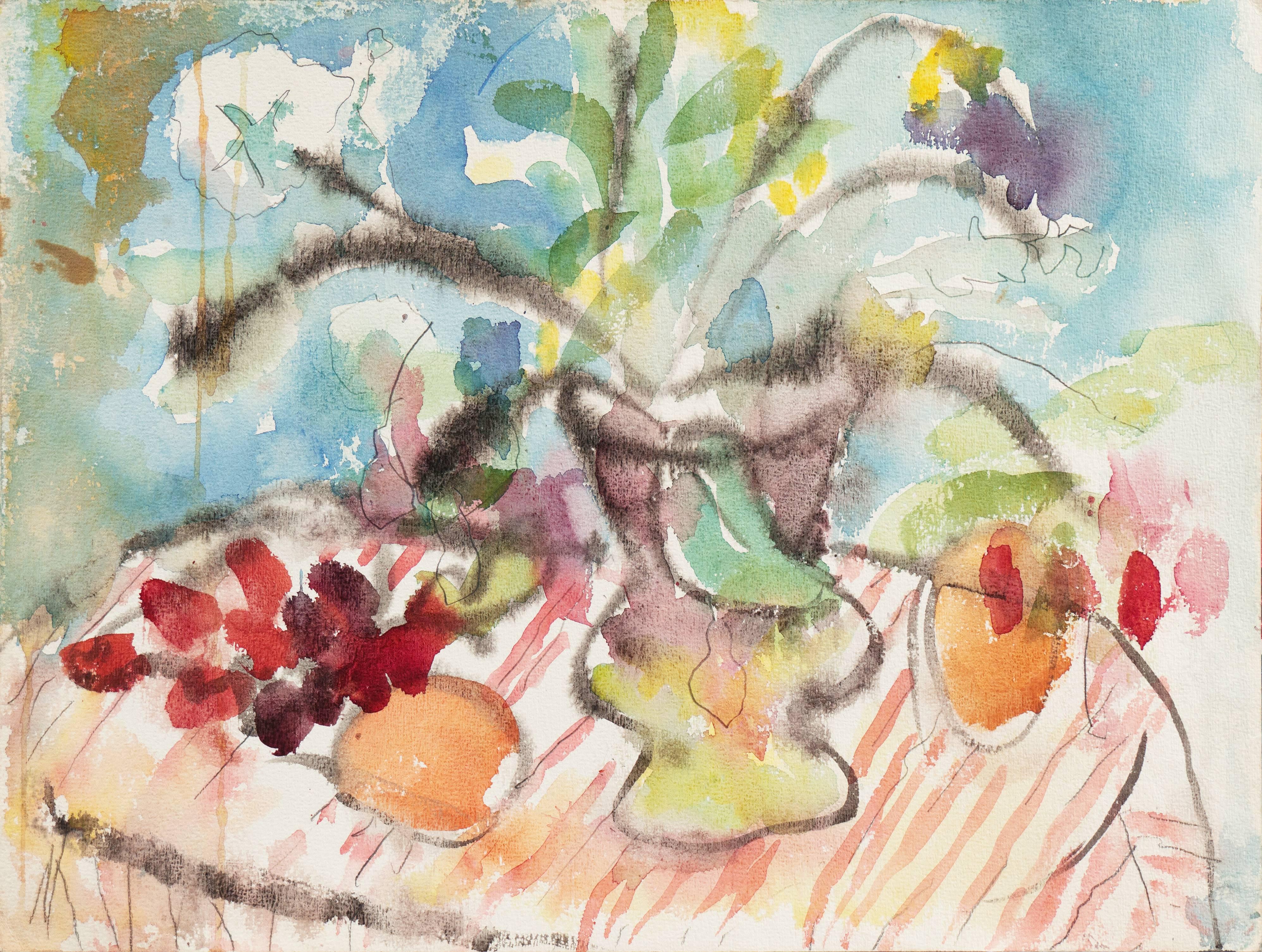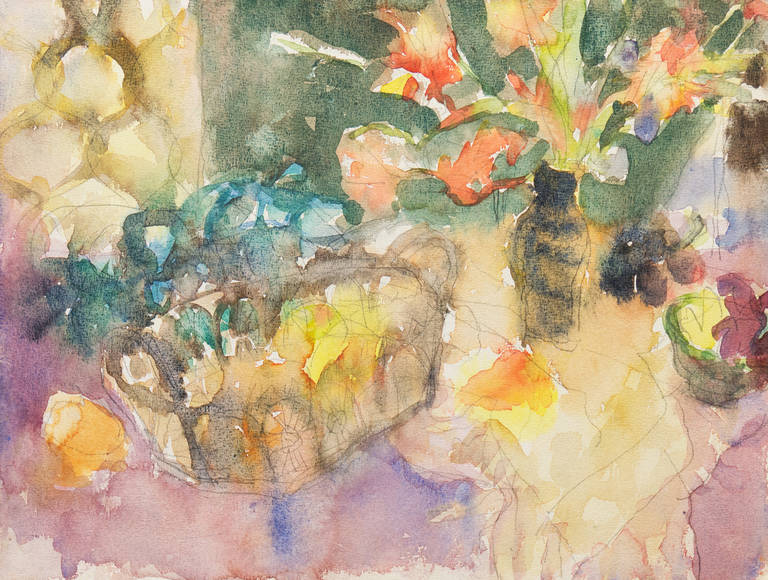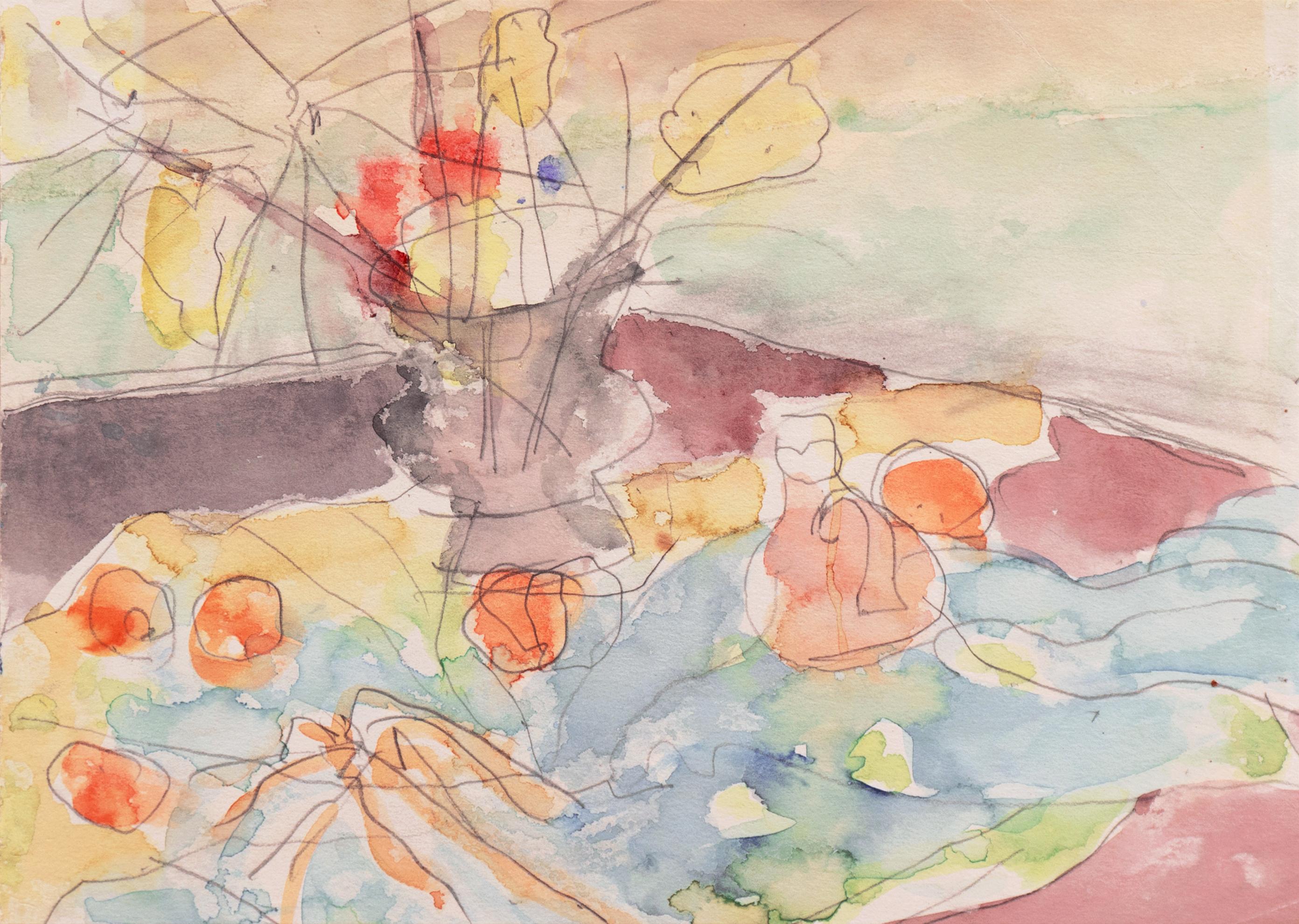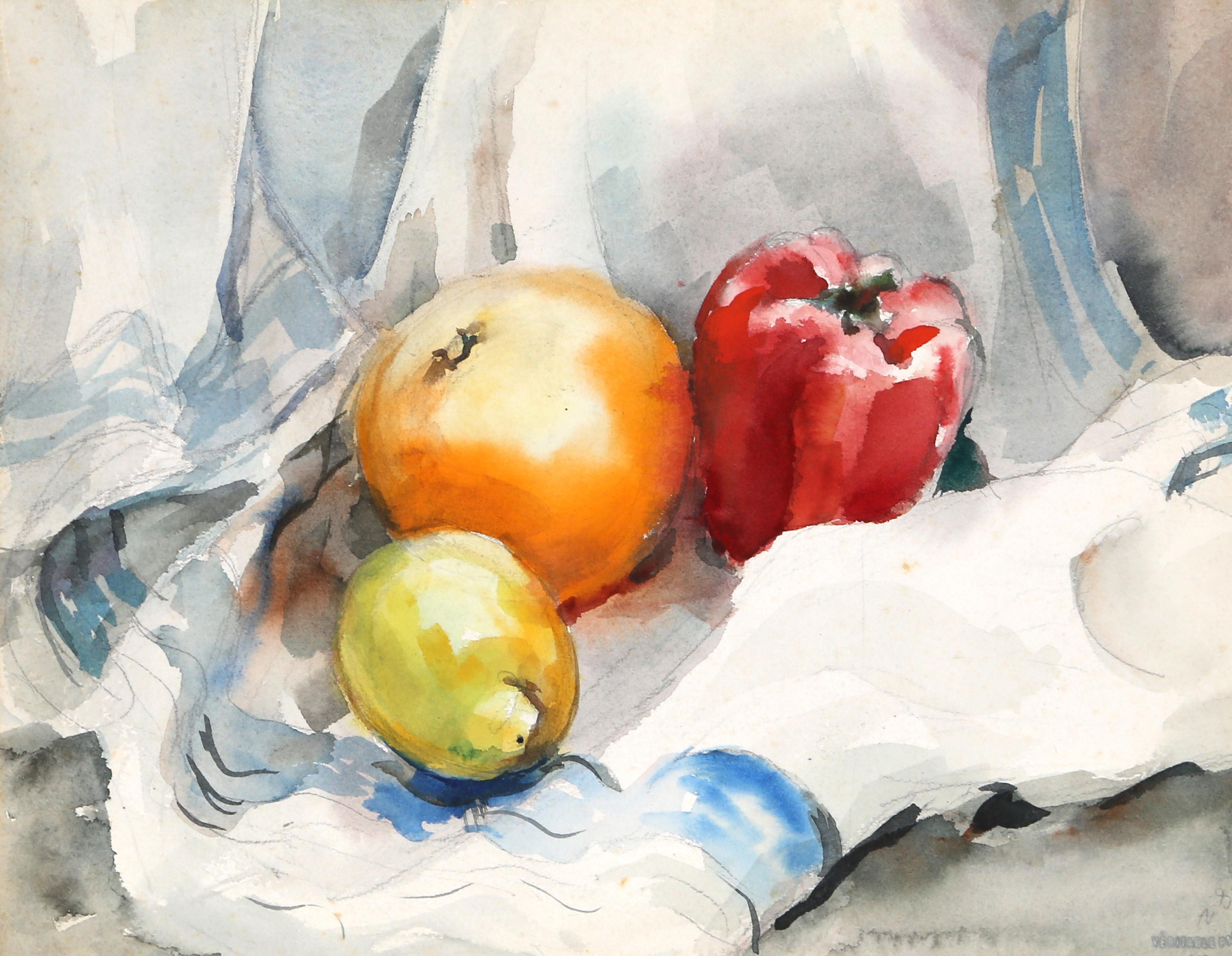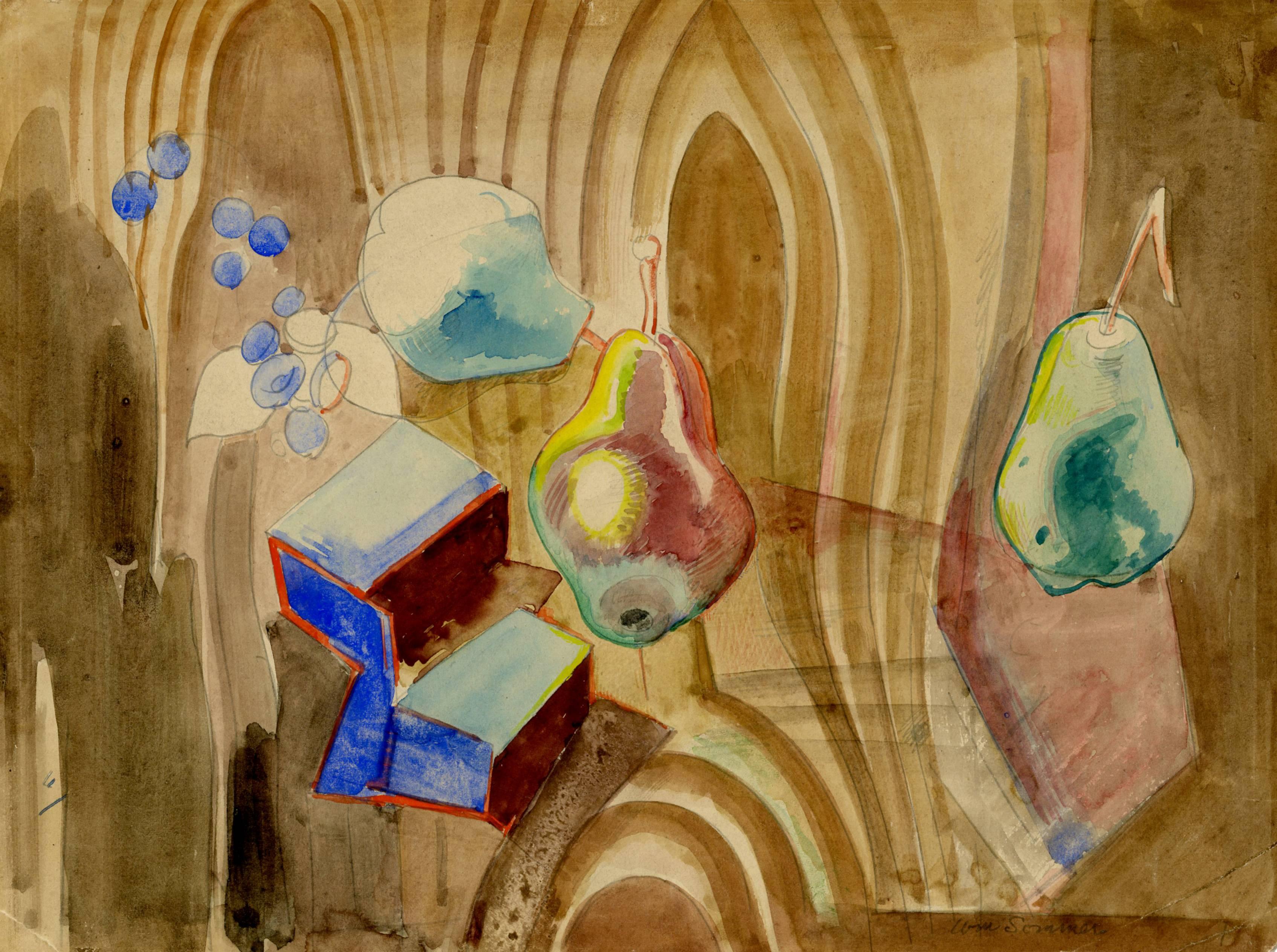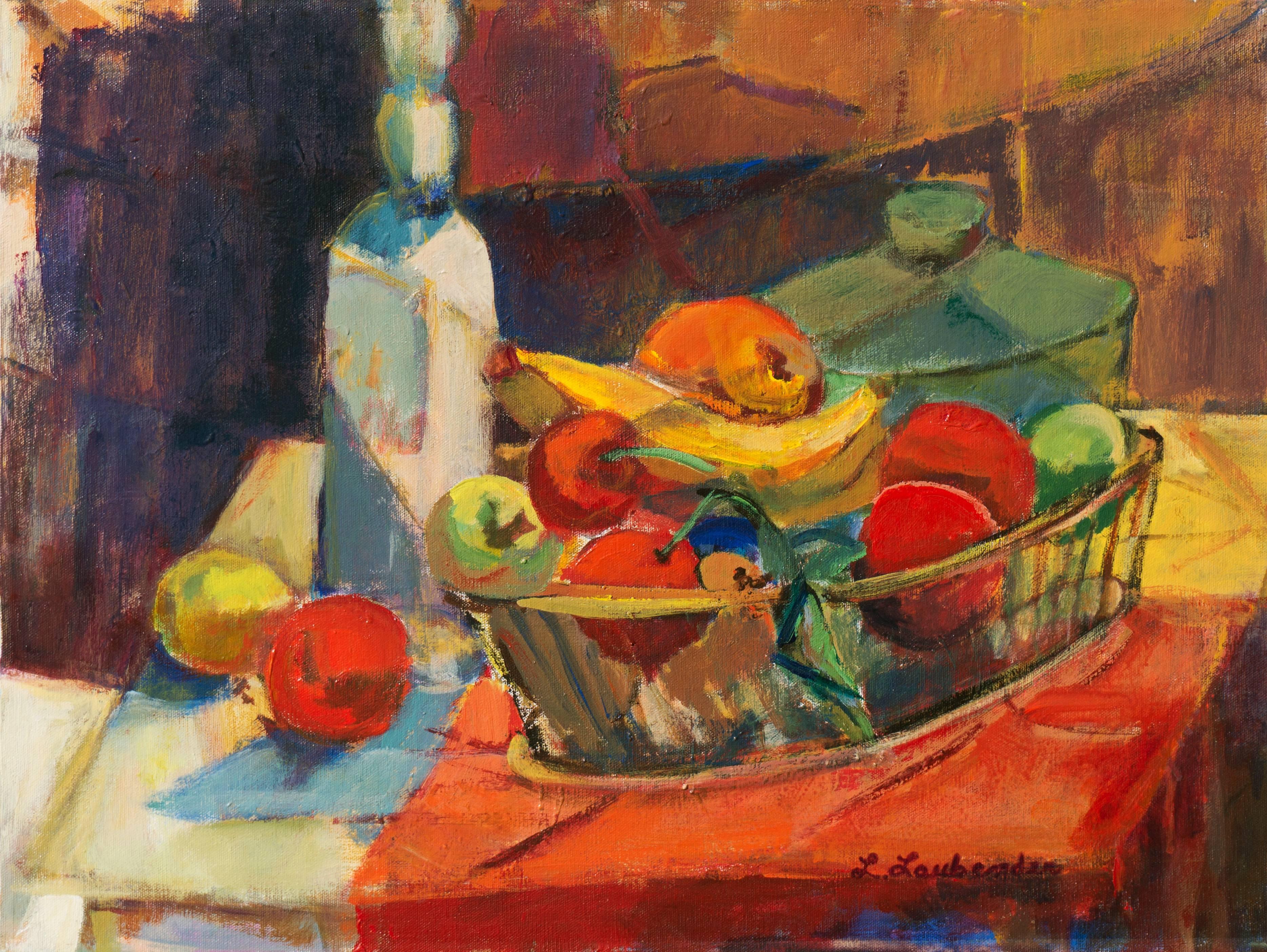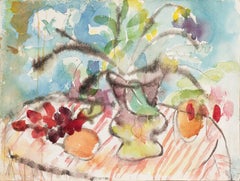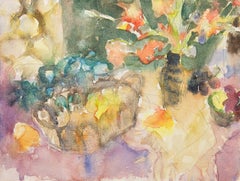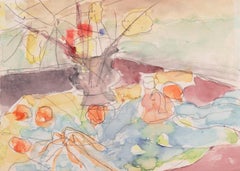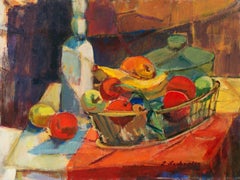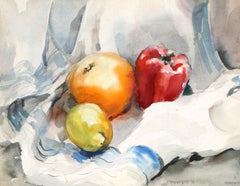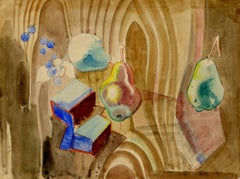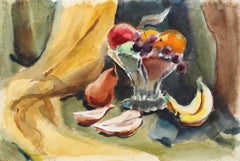Items Similar to 'Still Life', Chouinard Art School, Carmel Art Association, Santa Barbara Museum
Want more images or videos?
Request additional images or videos from the seller
1 of 11
Samuel Colburn'Still Life', Chouinard Art School, Carmel Art Association, Santa Barbara Museum1982
1982
$3,600
£2,731.60
€3,123.34
CA$5,028.22
A$5,590.70
CHF 2,919.16
MX$68,052.44
NOK 37,247.15
SEK 34,898.80
DKK 23,310.04
Shipping
Retrieving quote...The 1stDibs Promise:
Authenticity Guarantee,
Money-Back Guarantee,
24-Hour Cancellation
About the Item
Signed lower left, 'Sam Colburn' for Samuel Colburn (American, 1909-1993) and dated 1982.
A powerful, late work by this well-listed American regionalist and long-time member of the Carmel Art Association who studied at the Chouinard Institute and, later with Fernand Leger. Colburn exhibited widely and with success, including with solo exhibitions at the Santa Barbara Museum of Art and the Lucien Labaudt Gallery.
While most American Regionalists adhered to the tenets of Realism, Colburn liked to experiment with the lessons of modernism. Like the East Coast modernist John Marin, a major influence, Colburn continually searched for a direct freedom of expression. The San Francisco critic Alfred Frankenstein credited Colburn with a sense of drama and "..as fine an eye for the subtleties of watercolor as this country has produced since Marin's heyday."
Colburn grew up in Glendale and Long Beach and studied geology at the University of Southern California. After graduating in 1932 he spent a year in Europe traveling and studying art. Upon his return to Los Angeles, he studied with Don Graham at Chouinard Art Institute. In 1937 he moved to Carmel, where he became a member of the Carmel Art Association (1940). The Monterey Peninsula provided the perfect cultural climate for the development of Colburn's art. At the time, the prominent artists Armin Hansen, William Ritschel, Paul Whitman, August Gay, and Louis Siegriest were present in the area and provided valuable friendship and advice; the writer John Steinbeck, poet Robinson Jeffers and photographers Edward Weston and Ansel Adams were also close friends.
Salvador Dalí, who lived in Pebble Beach during the 1940s, attracted other important European modernists to the area including Fernand Leger, with whom Colburn studied in 1941. Colburn's portrait of Jeffers is on the cover of the 1963 Vintage paperback edition of 'Robinson Jeffers: Selected Poems'. Colburn was an active member of the artistic community, teaching, writing art criticism for The Carmel Pine Cone, executing public murals, and exhibiting in galleries and museums throughout California, Colorado, and New York.
Colburn gained his substantial reputation as a watercolorist and for his early paintings of the Monterey Peninsula in Northern California. He depicted the fisherman and the activities around the wharf and the canneries, as well as the hills and farm buildings around Salinas and Carmel Valley at the time his friend, John Steinbeck, was immortalizing them in his novels.
(With thanks to Bolton Colburn)
Reference:
Who Was Who in American Art 1564-1975: 400 Years of Artists in America, Peter Hastings Falk, Sound View Press 1999, Vol. 1, p. 688; Artists in California 1786-1940, Third Edition, Edan Milton Hughes: Crocker Art Museum, Sheridan Books 2002, Vol. 1, p. 229; Davenport’s Art Reference 2009/10 Edition, LTB Gordonsart, Inc. 2008, p. 586; et al.
- Creator:Samuel Colburn (1909 - 1993, American)
- Creation Year:1982
- Dimensions:Height: 15.25 in (38.74 cm)Width: 19.25 in (48.9 cm)
- Medium:
- Movement & Style:
- Period:
- Condition:paper laid down on archival, eight-ply, cotton-rag matboard; age-toning to mulberry paper, minor restoration, minor stain to lower right corner; unframed; shows well.
- Gallery Location:Santa Cruz, CA
- Reference Number:1stDibs: LU3449873692
About the Seller
5.0
Platinum Seller
Premium sellers with a 4.7+ rating and 24-hour response times
Established in 1982
1stDibs seller since 2013
741 sales on 1stDibs
Typical response time: 1 hour
- ShippingRetrieving quote...Shipping from: Santa Cruz, CA
- Return Policy
Authenticity Guarantee
In the unlikely event there’s an issue with an item’s authenticity, contact us within 1 year for a full refund. DetailsMoney-Back Guarantee
If your item is not as described, is damaged in transit, or does not arrive, contact us within 7 days for a full refund. Details24-Hour Cancellation
You have a 24-hour grace period in which to reconsider your purchase, with no questions asked.Vetted Professional Sellers
Our world-class sellers must adhere to strict standards for service and quality, maintaining the integrity of our listings.Price-Match Guarantee
If you find that a seller listed the same item for a lower price elsewhere, we’ll match it.Trusted Global Delivery
Our best-in-class carrier network provides specialized shipping options worldwide, including custom delivery.More From This Seller
View All'Still Life', Louvre, LACMA, Académie Chaumière, California Post-Impressionist
By Victor Di Gesu
Located in Santa Cruz, CA
Victor Di Gesu (American, 1914-1988) estate stamp verso and painted circa 1960.
Winner of the Prix Othon Friesz, Victor di Gesu first attended the Los Angeles Art Center and the Cho...
Category
1950s Post-Impressionist Still-life Drawings and Watercolors
Materials
Paper, Watercolor, Graphite
'Still Life', Louvre, California Post-Impressionist, LACMA, Académie Chaumière
By Victor Di Gesu
Located in Santa Cruz, CA
Estate stamp, verso, for Victor di Gesu (American, 1914-1988) and painted circa 1955.
Winner of the Prix Othon Friesz, Victor di Gesu first attended the Los Angeles Art Center and t...
Category
1950s Post-Impressionist Still-life Paintings
Materials
Watercolor, Laid Paper, Graphite
'Still Life', Paris, Louvre, Académie Chaumière, LACMA, SFAA, Carmel, California
By Victor Di Gesu
Located in Santa Cruz, CA
Stamped verso for estate of Victor Di Gesu (American, 1914-1988) and painted circa 1955.
Winner of the Prix Othon Friesz, Victor di Gesu first attended the Los Angeles Art Center an...
Category
1950s Post-Impressionist Still-life Drawings and Watercolors
Materials
Paper, Watercolor, Graphite
'Still Life With a Basket of Fruit', California Woman Artist
By Lorraine Laubender
Located in Santa Cruz, CA
Signed lower right 'L. Laubender' for Lorraine Laubender (American, 1921-2011) and painted circa 1960. Vintage art exhibition label verso.
A vibrant Modernist still-life by this lis...
Category
1960s Modern Still-life Paintings
Materials
Canvas, Acrylic
'Still Life of Fruit', Denver Art Museum, WPA, Santa Barbara Museum, Who Was Who
Located in Santa Cruz, CA
Signed, faintly, lower left, 'Donald Bear' (American, 1905-1952) and painted circa 1945.
A dynamic, modernist still-life of fruit in gouache, watercolor, crayon and india-ink.
Donald Jeffries Bear was born in Terre Haute, Indiana, and grew up in Denver. He first attended Denver's Art Academy and, later in life, became director of the Denver Art Museum (1930-35). During the 1930s, he was also regional advisor for the Federal Art Project and was a primary art...
Category
1940s Modern Still-life Drawings and Watercolors
Materials
Chalk, Crayon, Ink
'Still Life', Carnegie, Biltmore, Mills College, CPLH, LACMA, WPA, Hollywood
By Boris Deutsch
Located in Santa Cruz, CA
'Still Life', Carnegie, Biltmore, Mills College, CPLH, LACMA, WPA, CWS, Hollywood
Signed, lower right, 'Boris Deutsch' (Lithuanian-American, 1892-1978) and dated 1926.
Deutsch bega...
Category
1920s Modern Still-life Paintings
Materials
Masonite, Oil, Canvas
You May Also Like
Fruit Still Life, Impressionist Watercolor by Eve Nethercott
By Eve Nethercott
Located in Long Island City, NY
Eve Nethercott, American (1925 - 2015) - Fruit Still Life (P5.22), Year: circa 1960, Medium: Watercolor on Paper, Size: 11 x 14 in. (27.94 x 35.56 cm), Description: Arranged ...
Category
1960s Impressionist Still-life Drawings and Watercolors
Materials
Watercolor
Still Life with Tromp L'Oeil
By William Sommer
Located in Fairlawn, OH
Still Life with Tromp L'Oeil
Graphite and watercolor on a book page.
Signed in ink by the artist lower right corner
(see photo)
Provenance:
Estate of the artist (Estate No. 00916 verso)
Ray Sommer (the artist's son)
Joseph M. Erdelac (No. 18 JME verso)
Book page verso is an illustration of a Durer woodcut...
Category
1920s American Modern Still-life Drawings and Watercolors
Materials
Watercolor
Still Life with Fruit, Impressionist Watercolor by Eve Nethercott
By Eve Nethercott
Located in Long Island City, NY
Eve Nethercott, American (1925 - 2015) - Still Life with Fruit (P4.20), Year: circa 1960, Medium: Watercolor on Paper, Size: 14 x 18 in. (35.56 x 45.72 cm), Description: Fill...
Category
1960s Impressionist Still-life Drawings and Watercolors
Materials
Watercolor
Still Life with Fruit, Impressionist Watercolor by Eve Nethercott
By Eve Nethercott
Located in Long Island City, NY
Eve Nethercott, American (1925 - 2015) - Still Life with Fruit (P1.29), Year: 1960, Medium: Watercolor on Paper, Size: 15 x 22 in. (38.1 x 55.88 cm), Description: Scattered a...
Category
1960s Impressionist Still-life Drawings and Watercolors
Materials
Watercolor
Still Life
By Earl Horter
Located in Bryn Mawr, PA
Best known as an impassioned supporter and avid collector of modern art, Earl Horter was also an artist himself. Largely self-taught, Horter was a highly skilled draftsman and engrav...
Category
1930s American Modern Still-life Drawings and Watercolors
Materials
Paper, Pastel
Still Life, Impressionist Watercolor by Eve Nethercott
By Eve Nethercott
Located in Long Island City, NY
Eve Nethercott, American (1925 - 2015) - Still Life (P5.56), Year: 1960, Medium: Watercolor on Paper, Size: 15 x 20 in. (38.1 x 50.8 cm), Description: Eve Nethercott's still ...
Category
1960s Impressionist Still-life Drawings and Watercolors
Materials
Watercolor
More Ways To Browse
Art Carmel California
Paintings Santa Barbara California
Santa Barbara Vintage
Dali Watercolor
Salvador Dali Watercolor
Dali Drawing
Gay Vintage Art
Santa Barbara Beach Paintings
Carmel Art Association Paintings
Regionalist Art
Pebble Beach
Carmel Coast Art
Carmel Beach
Salvador Dali Orange
Gay San Francisco
William Orange Portrait
Vintage Pebble Art
Peter Samuels
